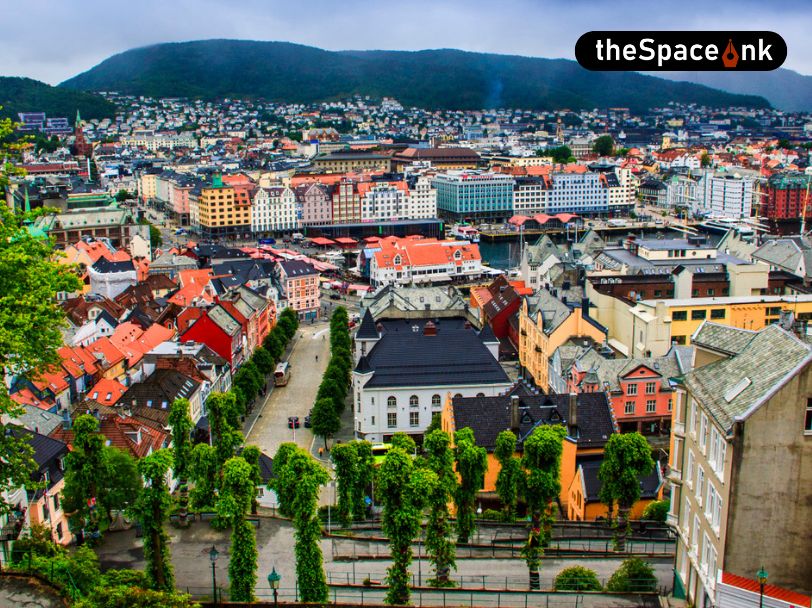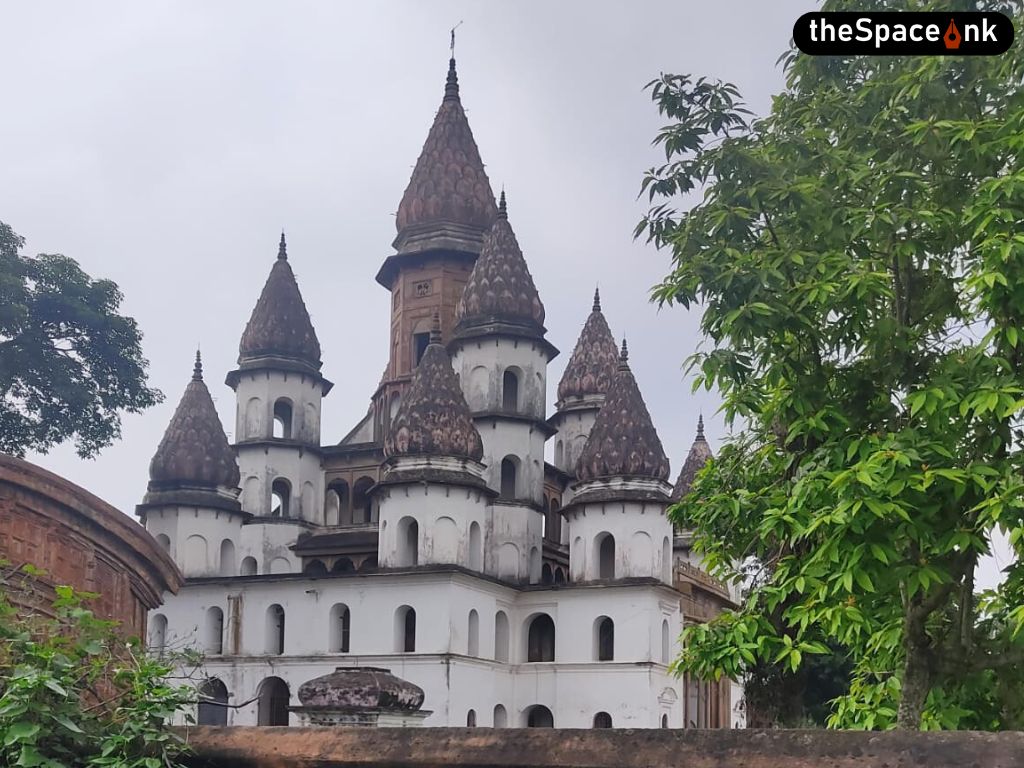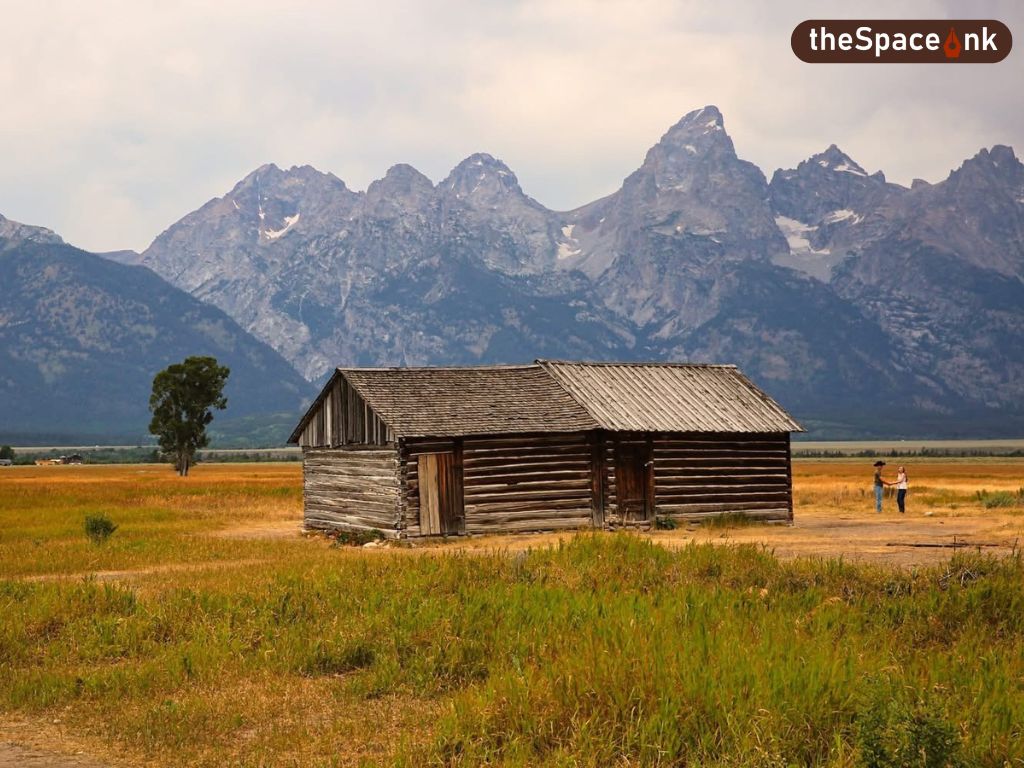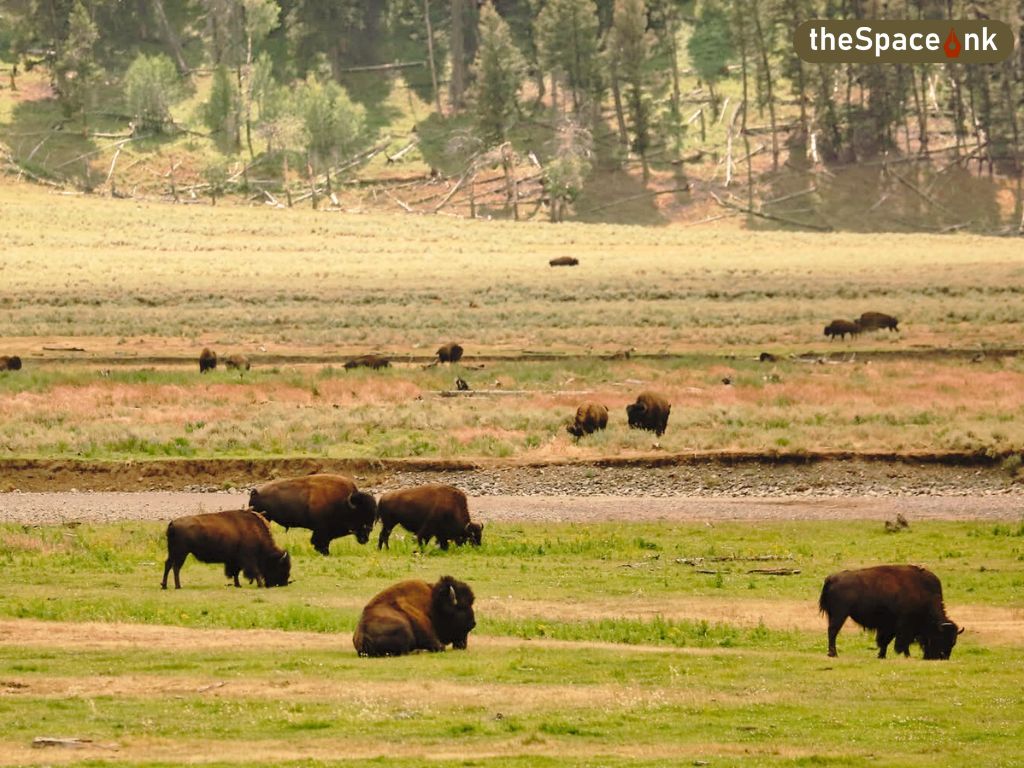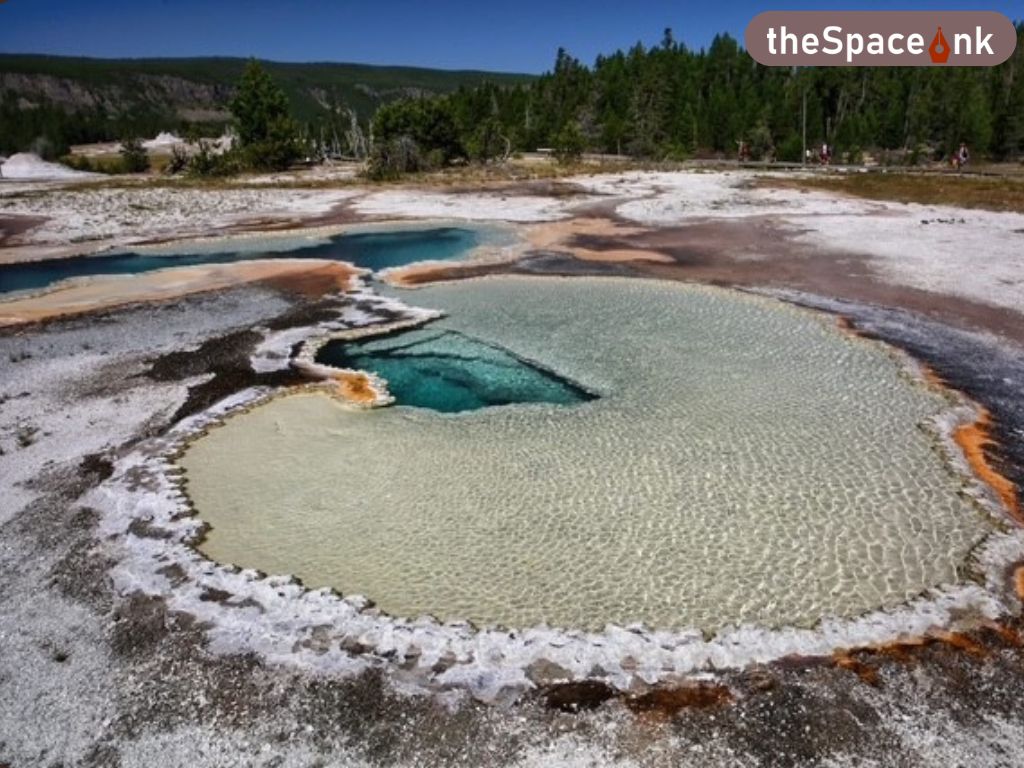Surrounded by steep mountains and nestled beside the world’s largest fjord, the charming city of Bergen sits like a painted masterpiece on Norway’s west coast. Known as the gateway to the fjords, Bergen casts a spell with its quaint beauty, a place where time seems to slow down. Enveloped by seven towering peaks, the city thrives on its fusion of nature and history, where colorful wooden houses cascade down hillsides and the Hanseatic wharf of Bryggen stands as a tribute to its maritime past.
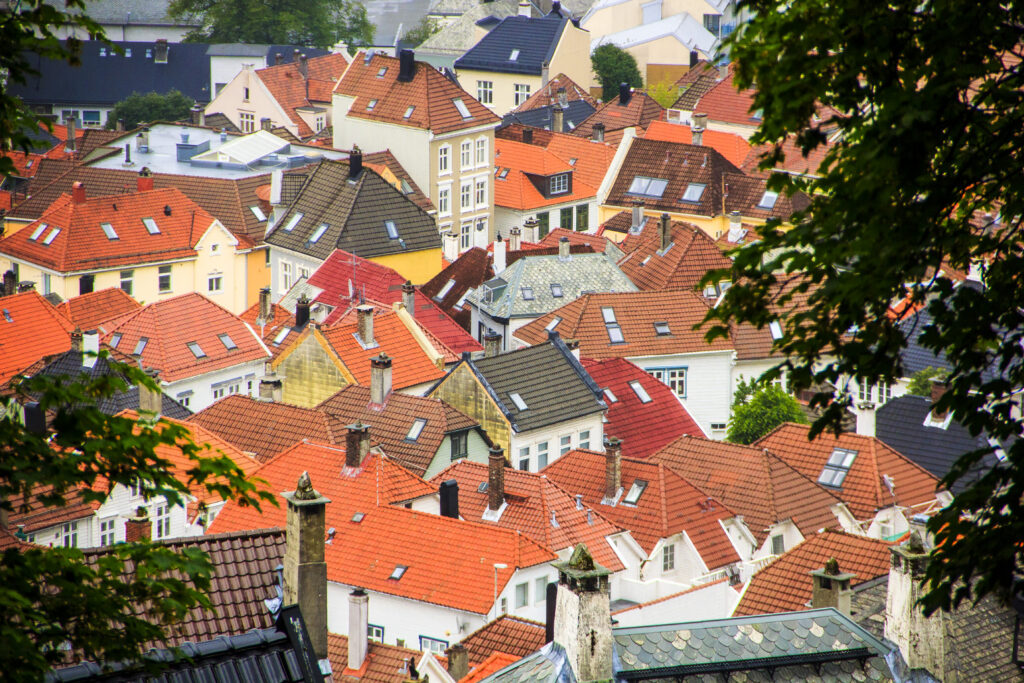
Arriving in Bergen after my fjord adventure, I stepped off the Bergen Railway at Central Station, my mind still swirling with the grandeur of Norway’s landscapes. A short walk took me to the Youth Hostel, where I had booked my stay. After a quick freshening up, I set out to explore the city’s winding streets, determined to soak in every historic corner and cultural delight.
Also Read: Norway-1: An Exhilarating Fairytale Adventure through Fjord Land
Bryggen: A Walk-Through Norway’s Past
My first stop was Bryggen—the heart of Bergen’s medieval charm. Now a UNESCO World Heritage Site, this harbor district traces its origins to the Viking Age, when King Olav Kyrre established it as a vital port in 1070 AD. Over centuries, Bergen became Northern Europe’s bustling trade hub, where Hanseatic merchants, speaking Middle Low German, dominated commerce and shaped the city’s destiny. Despite numerous devastating fires, Bergen rebuilt itself time and again, preserving the spirit of its heritage.
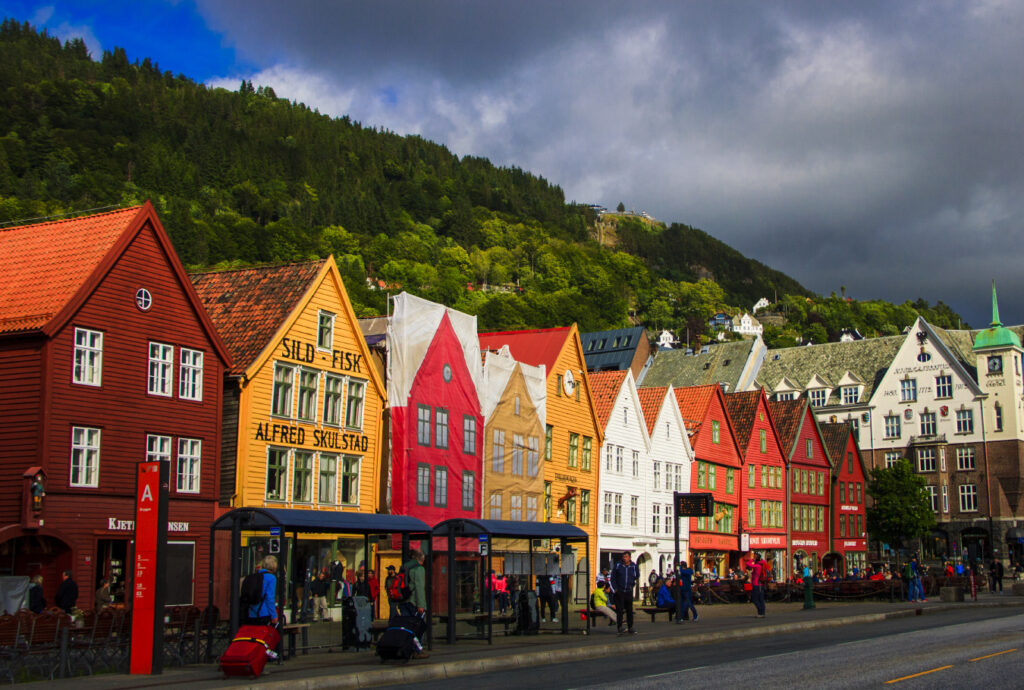
Like countless other travellers, I found myself drawn to the striking, narrow boathouses that line Bryggen. With around 70 vibrantly painted structures, the district hums with life—each building repurposed into cozy cafés, antique shops, and bookstores. Wandering through the cobblestone alleys felt like stepping into a time capsule of medieval Norway.
Lost in the world of Scandinavian artistry, I barely noticed time slipping away. It was nearly 9 PM when I left the museum, my next destination already set
Flavours of Bergen: A Viking Feast
Hunger soon crept in, and I spotted a small food truck stationed nearby. Unsure of what to try, I asked for a recommendation and was introduced to Norwegian Stew—a Viking dish of marinated minced lamb cooked with potato and carrot. As I took my first bite, I felt as if I had stumbled upon the flavours of Norway’s past, a meal steeped in tradition and warmth. With my appetite satisfied, I ventured deeper into Bergen’s artistic heart, ready to uncover its creative side.
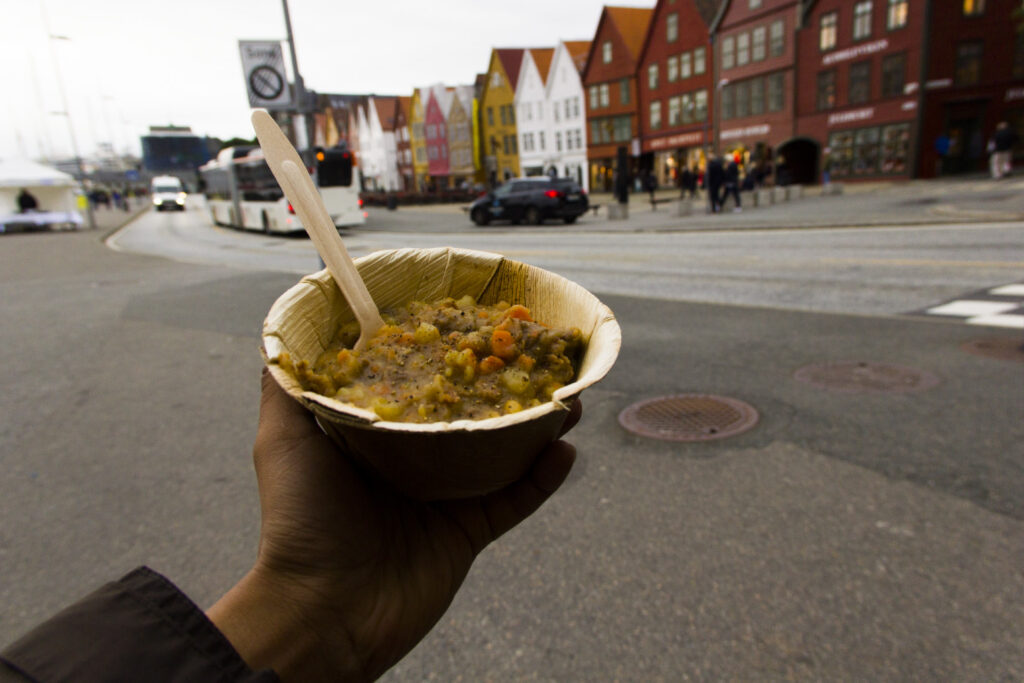
Street Art & Museums: Aesthetic Wonders
Scandinavians are known for their refined artistic sensibilities, and Bergen is no exception. Walking toward KODE, Scandinavia’s largest museum for art and music, I stopped to admire “The Homeless”—a bronze sculpture paying homage to society’s overlooked souls.
KODE is an artistic powerhouse, blending visual arts, historical artifacts, and musical heritage across four buildings. Visitors can even explore the homes of Norway’s renowned composers—Edvard Grieg, Harald Sæverud, and Ole Bull. For 160 NOK, I stepped into a treasure trove, gazing at more than 40,000 objects on display.
Lost in the world of Scandinavian artistry, I barely noticed time slipping away. It was nearly 9 PM when I left the museum, my next destination already set—the famed Bergen Fish Market, a place alive with the scents and sounds of Norwegian culinary heritage.
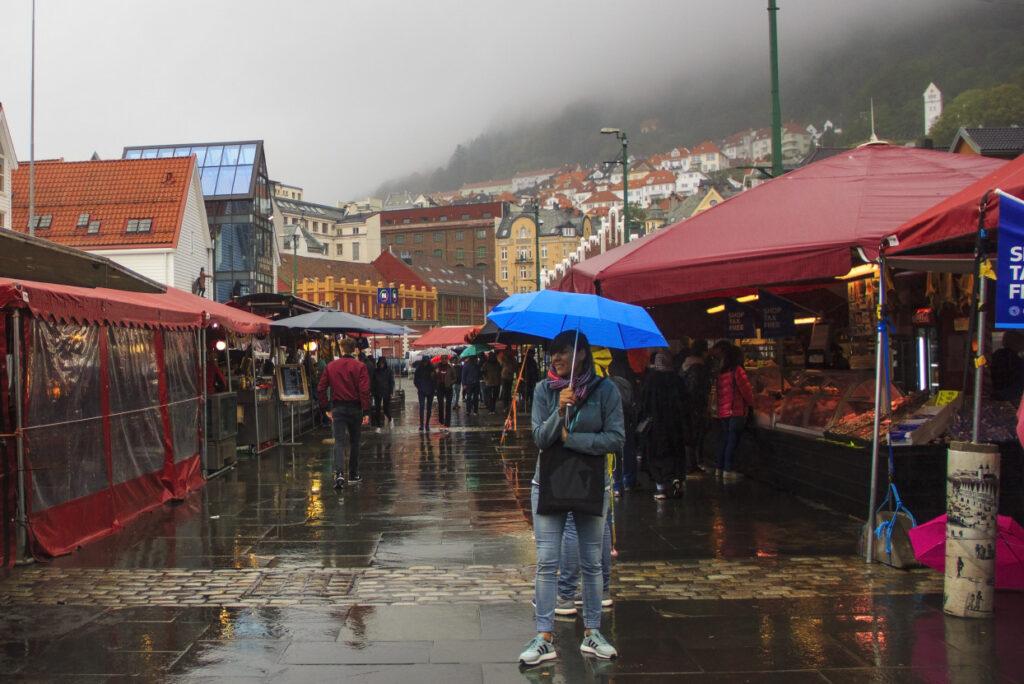
Fisketorget i Bergen: A Seafood Haven
The Bergen Fish Market, one of Norway’s busiest outdoor markets since the 1200s, was bustling as I arrived. Not just fresh fish, but an exotic array of squid, octopus, and even whale meat lined the stalls. My visit was an immersive dive into Norway’s gastronomic traditions, bringing centuries of trade and craftsmanship to life. As night descended, Bergen’s city lights shimmered over the waterfront, promising lively nightlife. But exhaustion tugged at me, and I decided to call it a day, retreating to my hostel in anticipation of my next adventure.
Also Read: Makar Sankranti in Hyderabad
A Trek to Mount Fløyen: Chasing the Best View
Morning arrived with renewed energy, and I set my sights on Mount Fløyen, one of Bergen’s seven surrounding peaks. Though the zip-line to Mount Ulriken was temporarily closed due to weather, I opted for the rewarding two-hour hike to Fløyen instead of taking the funicular.
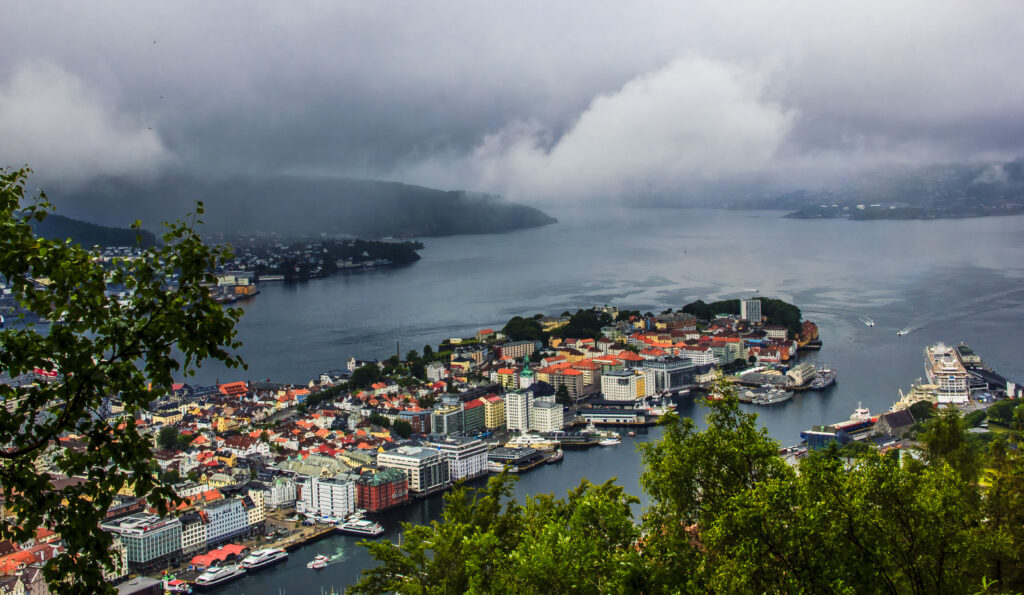
The journey began in Skredderdalen, an uphill neighborhood, then led through dense forest trails—each step immersing me further into Bergen’s wilderness. The panoramic views along the way were nothing short of breathtaking. Two hours later, I reached the summit. Unfortunately, the sky had decided to drape itself in thick, stubborn clouds, obscuring the city’s grandeur. With no choice but to descend, I made my way back to the city center, where I indulged in baked salmon for lunch.
A Rain-Kissed Fjord Experience
By afternoon, I was ready for another fjord excursion. As I reached the jetty, raindrops began tapping on the ferry’s deck. While the overcast skies denied us a clear view, there was something thrilling about sailing through misty fjords as rain painted the landscape. The sight of Bryggen’s colorful boathouses glistening in the downpour resembled a cityscape straight out of a Van Gogh masterpiece.
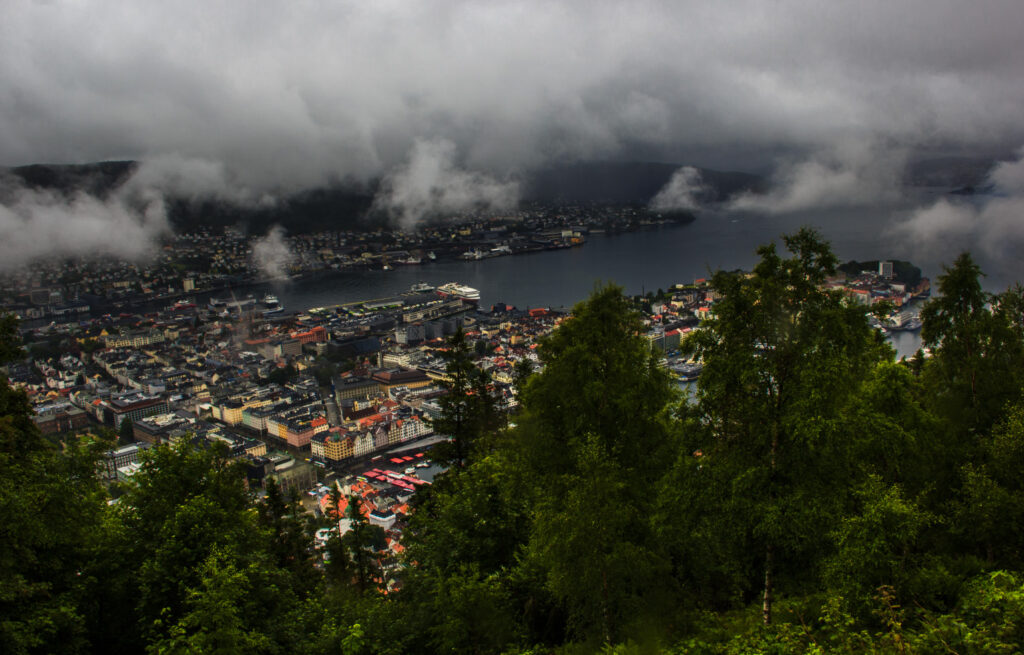
Seeking warmth, I stepped into a cozy café, where a chance encounter with a middle-aged woman led me to the National Theatre—an unexpected gift. As a fan of Nordic plays, I relished every moment of the performance, soaking in the depth of Scandinavian storytelling.
Farewell, Bergen: Norway’s Embrace
The night ended with a final meal at the Fish Market, where I sat alone by the waterfront, gazing at the twinkling city lights. It was my last night in this remarkable country, and I couldn’t shake the feeling that Norway, in all its wild beauty, had left an imprint on my soul.
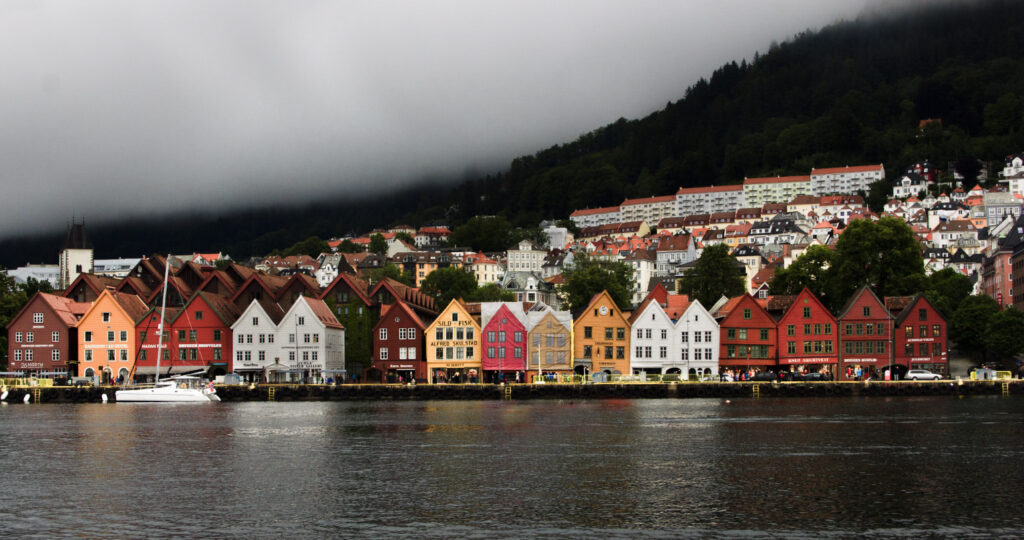
My journey as a traveller would be incomplete without Norway—its landscapes, its people, and the whispered tales of the fjords.
Image courtsey: Author
By day, Amlan Chakraborty a technical architect in IT; by passion, he's an explorer, travel writer and photographer. During his travels, he savors the journey on foot or via public transport, immersing himself in the local culture at street food joints and book corners. Through his lens, he captures and shares the essence of nature, humanity, and cultural and socio-political moments.


